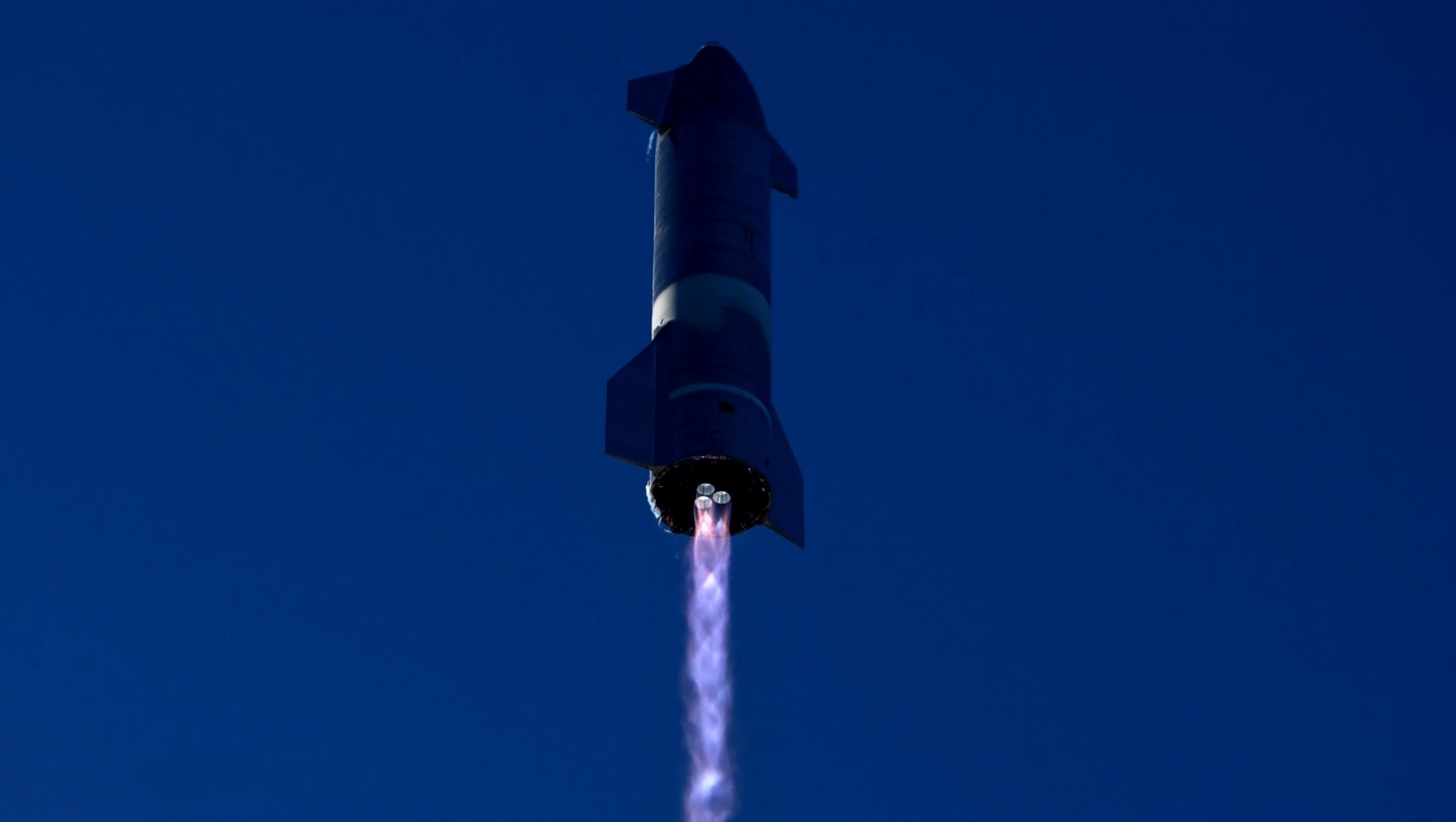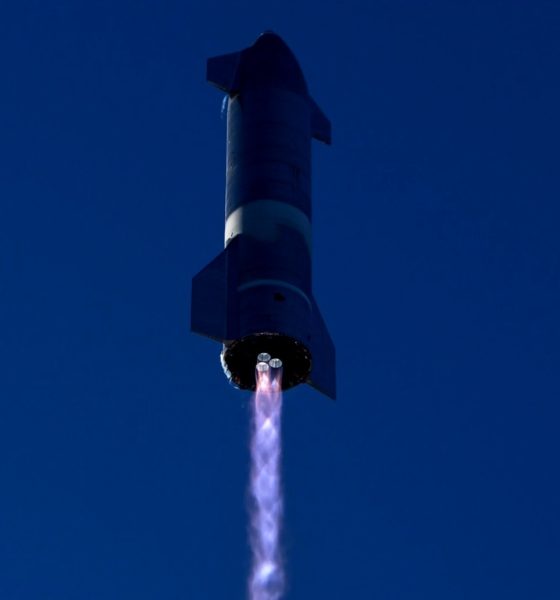

News
SpaceX Starship to test landing upgrades after two explosions
After two Starship prototypes aced their high-altitude launch debuts only to suffer last-second landing failures for unique reasons, SpaceX is gearing up for a third launch as early as this week.
Crucially, though Elon Musk’s levelheaded realism (or pessimism) has often seemed to underestimate the actual odds of success, the SpaceX CEO is substantially more confident on Starship’s third launch attempt than he was on the first flight two months ago. Back when Starship serial number 8 (SN8) was preparing to attempt the program’s first high-altitude launch, Musk pegged the probability of a successful launch, freefall, and landing at ~33%.
As it turned out, he wasn’t wrong, but Starship SN8 ultimately made far closer to a total success than almost anyone – inside SpaceX or not – expected it to get on the first try. Less than two months later, Starship SN9 suffered a similar last-second landing failure more than six minutes into the flight, though the root causes of both failures were unique.
In other words, both flight tests served their nominal purpose, uncovering two failure modes that would have eventually reared their heads one way or another. With SN8, Starship was unable to maintain enough pressure in its secondary landing fuel tank to supply two Raptor engines with enough fuel for a landing burn. Starship SN9 failed a few seconds before SN8 when one of the two Raptor engines needed for a flip and landing burn never ignited, causing the rocket to smash into the ground at an angle relative to SN8’s tail-down impact.
As previously discussed on Teslarati, Elon Musk eventually revealed his opinion that SN9’s engine-out failure was potentially avoidable and that SpaceX would change the way future Starships attempt to land in a bid to add more redundancy.
“While SpaceX obviously hasn’t spun around and fixed a complex Starship propulsion issue in a matter of days, Musk eventually revealed his opinion that he, his engineers, or some combination of both “were too dumb” to exploit one obvious way to mitigate the risk of engine failure during [Starship SN9’s] flip and landing. That ‘obvious’ tweak: reignite all three of Starship’s available landing engines, not just two.”
By igniting not just two – but all three – Raptor engines during Starship’s flip burn, SpaceX could essentially perform a midair static fire, giving the rocket’s flight computer a few seconds to analyze performance and downselect to the two healthiest engines for the final landing burn. With that change implemented, Starship would theoretically have enough redundancy to land if only two of its three sea-level Raptors performed nominally.
Currently installed on one of two ‘suborbital stands’ at SpaceX’s South Texas launch pad, Starship SN10 will be the first high-altitude prototype to attempt that three-engine flip burn and on-the-fly downselect. Musk says his confidence that SN10 will successfully land is now 60%, an almost twofold improvement over SN8. Starship SN10 could potentially fly as early as this week, though the prototype still needs to complete a nominal three-engine static fire test and the launch has yet to receive FAA approval.
Further down the road, Musk says that SpaceX is working hard to improve Raptor’s deep throttle performance, potentially allowing future Starships to burn two – or even three – engines all the way to touchdown for even more redundancy. Deep-throttling large, complex rocket engines is extraordinarily difficult, though, so that upgrade is likely no less than several months away. In the meantime, Starship SN11 is effectively complete and Starships SN15 through SN18 are being assembled to support a relentless flight test campaign as SpaceX works towards orbital flights.

Elon Musk
Elon Musk and Tesla AI Director share insights after empty driver seat Robotaxi rides
The executives’ unoccupied tests hint at the rapid progress of Tesla’s unsupervised Robotaxi efforts.

Tesla CEO Elon Musk and AI Director Ashok Elluswamy celebrated Christmas Eve by sharing personal experiences with Robotaxi vehicles that had no safety monitor or occupant in the driver’s seat. Musk described the system’s “perfect driving” around Austin, while Elluswamy posted video from the back seat, calling it “an amazing experience.”
The executives’ unoccupied tests hint at the rapid progress of Tesla’s unsupervised Robotaxi efforts.
Elon and Ashok’s firsthand Robotaxi insights
Prior to Musk and the Tesla AI Director’s posts, sightings of unmanned Teslas navigating public roads were widely shared on social media. One such vehicle was spotted in Austin, Texas, which Elon Musk acknowleged by stating that “Testing is underway with no occupants in the car.”
Based on his Christmas Eve post, Musk seemed to have tested an unmanned Tesla himself. “A Tesla with no safety monitor in the car and me sitting in the passenger seat took me all around Austin on Sunday with perfect driving,” Musk wrote in his post.
Elluswamy responded with a 2-minute video showing himself in the rear of an unmanned Tesla. The video featured the vehicle’s empty front seats, as well as its smooth handling through real-world traffic. He captioned his video with the words, “It’s an amazing experience!”
Towards Unsupervised operations
During an xAI Hackathon earlier this month, Elon Musk mentioned that Tesla owed be removing Safety Monitors from its Robotaxis in Austin in just three weeks. “Unsupervised is pretty much solved at this point. So there will be Tesla Robotaxis operating in Austin with no one in them. Not even anyone in the passenger seat in about three weeks,” he said. Musk echoed similar estimates at the 2025 Annual Shareholder Meeting and the Q3 2025 earnings call.
Considering the insights that were posted Musk and Elluswamy, it does appear that Tesla is working hard towards operating its Robotaxis with no safety monitors. This is quite impressive considering that the service was launched just earlier this year.
Elon Musk
Starlink passes 9 million active customers just weeks after hitting 8 million
The milestone highlights the accelerating growth of Starlink, which has now been adding over 20,000 new users per day.

SpaceX’s Starlink satellite internet service has continued its rapid global expansion, surpassing 9 million active customers just weeks after crossing the 8 million mark.
The milestone highlights the accelerating growth of Starlink, which has now been adding over 20,000 new users per day.
9 million customers
In a post on X, SpaceX stated that Starlink now serves over 9 million active users across 155 countries, territories, and markets. The company reached 8 million customers in early November, meaning it added roughly 1 million subscribers in under seven weeks, or about 21,275 new users on average per day.
“Starlink is connecting more than 9M active customers with high-speed internet across 155 countries, territories, and many other markets,” Starlink wrote in a post on its official X account. SpaceX President Gwynne Shotwell also celebrated the milestone on X. “A huge thank you to all of our customers and congrats to the Starlink team for such an incredible product,” she wrote.
That growth rate reflects both rising demand for broadband in underserved regions and Starlink’s expanding satellite constellation, which now includes more than 9,000 low-Earth-orbit satellites designed to deliver high-speed, low-latency internet worldwide.
Starlink’s momentum
Starlink’s momentum has been building up. SpaceX reported 4.6 million Starlink customers in December 2024, followed by 7 million by August 2025, and 8 million customers in November. Independent data also suggests Starlink usage is rising sharply, with Cloudflare reporting that global web traffic from Starlink users more than doubled in 2025, as noted in an Insider report.
Starlink’s momentum is increasingly tied to SpaceX’s broader financial outlook. Elon Musk has said the satellite network is “by far” the company’s largest revenue driver, and reports suggest SpaceX may be positioning itself for an initial public offering as soon as next year, with valuations estimated as high as $1.5 trillion. Musk has also suggested in the past that Starlink could have its own IPO in the future.
News
NVIDIA Director of Robotics: Tesla FSD v14 is the first AI to pass the “Physical Turing Test”
After testing FSD v14, Fan stated that his experience with FSD felt magical at first, but it soon started to feel like a routine.

NVIDIA Director of Robotics Jim Fan has praised Tesla’s Full Self-Driving (Supervised) v14 as the first AI to pass what he described as a “Physical Turing Test.”
After testing FSD v14, Fan stated that his experience with FSD felt magical at first, but it soon started to feel like a routine. And just like smartphones today, removing it now would “actively hurt.”
Jim Fan’s hands-on FSD v14 impressions
Fan, a leading researcher in embodied AI who is currently solving Physical AI at NVIDIA and spearheading the company’s Project GR00T initiative, noted that he actually was late to the Tesla game. He was, however, one of the first to try out FSD v14.
“I was very late to own a Tesla but among the earliest to try out FSD v14. It’s perhaps the first time I experience an AI that passes the Physical Turing Test: after a long day at work, you press a button, lay back, and couldn’t tell if a neural net or a human drove you home,” Fan wrote in a post on X.
Fan added: “Despite knowing exactly how robot learning works, I still find it magical watching the steering wheel turn by itself. First it feels surreal, next it becomes routine. Then, like the smartphone, taking it away actively hurts. This is how humanity gets rewired and glued to god-like technologies.”
The Physical Turing Test
The original Turing Test was conceived by Alan Turing in 1950, and it was aimed at determining if a machine could exhibit behavior that is equivalent to or indistinguishable from a human. By focusing on text-based conversations, the original Turing Test set a high bar for natural language processing and machine learning.
This test has been passed by today’s large language models. However, the capability to converse in a humanlike manner is a completely different challenge from performing real-world problem-solving or physical interactions. Thus, Fan introduced the Physical Turing Test, which challenges AI systems to demonstrate intelligence through physical actions.
Based on Fan’s comments, Tesla has demonstrated these intelligent physical actions with FSD v14. Elon Musk agreed with the NVIDIA executive, stating in a post on X that with FSD v14, “you can sense the sentience maturing.” Musk also praised Tesla AI, calling it the best “real-world AI” today.








